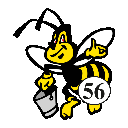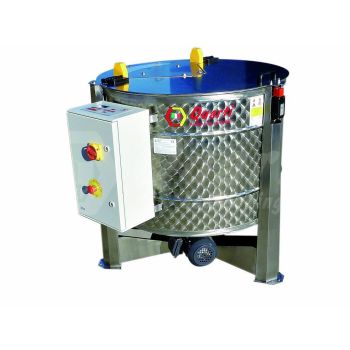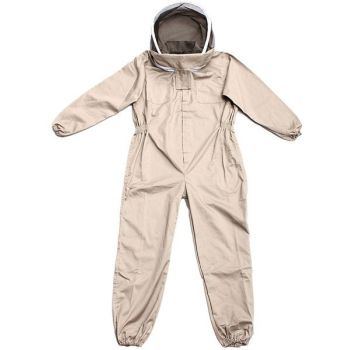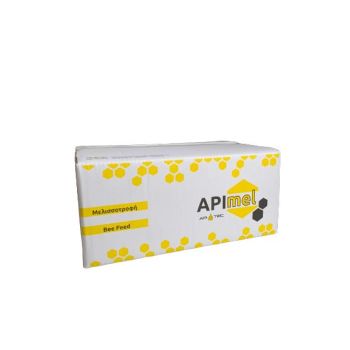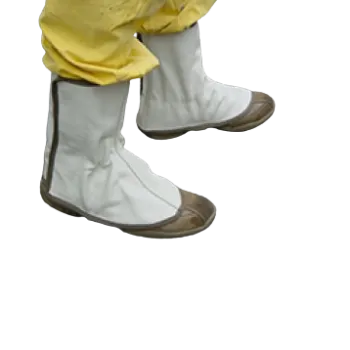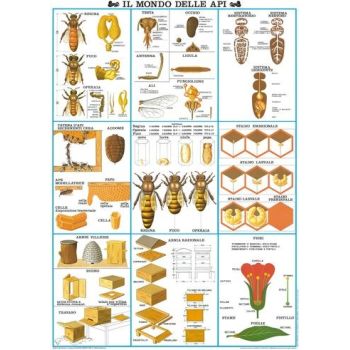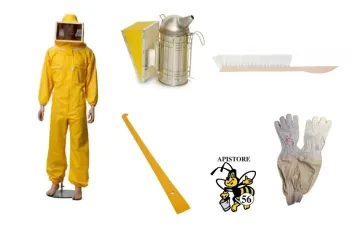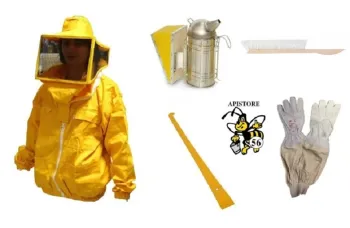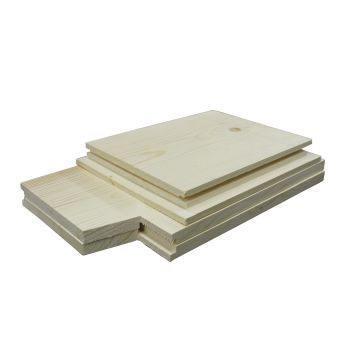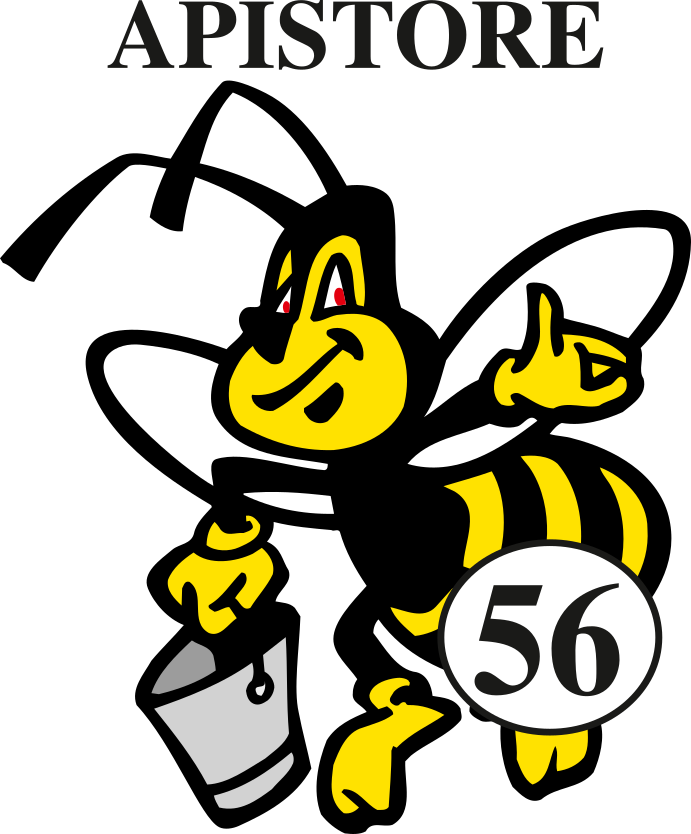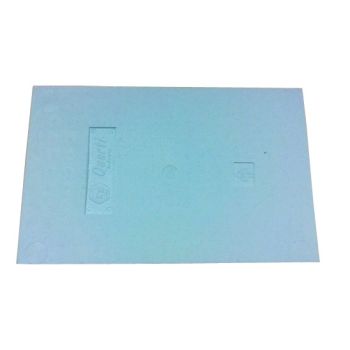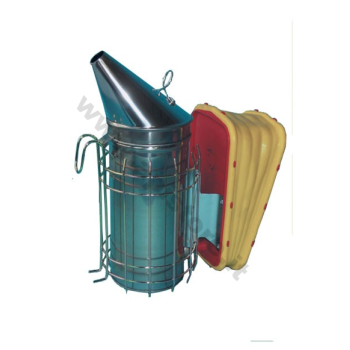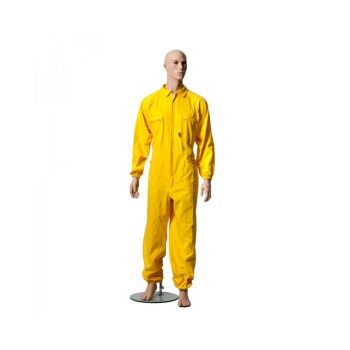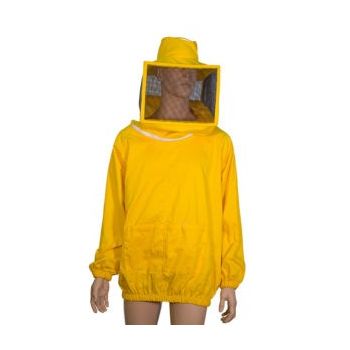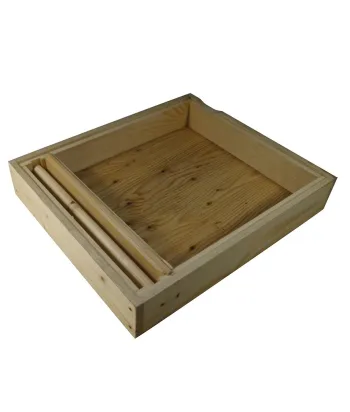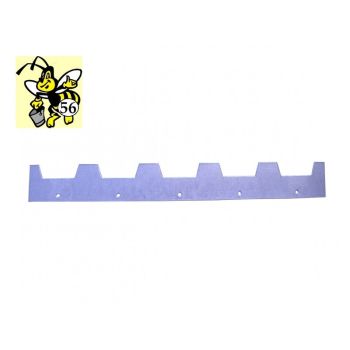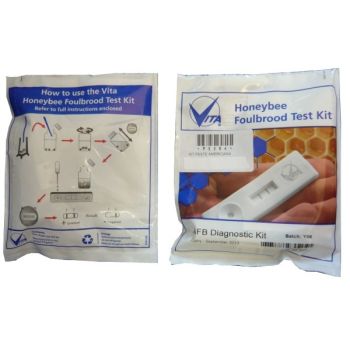

Axillary square hat mask with painted galvanized mesh, black cotton tulle for increased ventilation.
Elastics for fastening under the armpits
Silicone rubber mantle (also available as spare part cod QI M34) ,reinforced with ribs and adaptable to any type of smoker.
Removable anti-scald protection netNylon cheeks, fiberglass-filled, heat-resistantSilicone suction valveRear cheek, prepared with preholes for screwing the body to the smoker - adaptable on any model -
Protective beekeeping jacket including detachable square mask with zipper. Equipped with elastic cuffs.
Painted 10-frame D.B. Beehives, with honeycomb and frames in the nest and honeycomb. Complete with: Nest; Honey super; wooden honeycomb cover with mounted 4-position sheet metal disc; 10cm-high galvanized sheet metal cover lined with wood and faestile on bottom; galvanized sheet metal canopy; frames in nest and honeycomb with wax-free wire; plastic transport mask; galvanized pinwheels; metal porch; 3 connection angles; spacers mounted in the nest and Honey super; fixed anti-moth net bottom with galvanized sheet metal bottom removable from the back; 25mm thick seasoned fir wood; walls assembled with screws; carrying handles; Frame rest
Instructions for use Performing the test: Step-by-step illustrations Interpretation of resultsAfter 3 minutes, the control line should be clearly visible in the display window of the device. A positive result (indicated by the appearance of both the test line and the control line-see below) indicates that the pathogen sought is present in the sample, and that the larva taken was infected with American foulbrood. Note that even a faint T-line indicates a positive result.A negative result (only appearance of the control line, test line absent) indicates that the sample does not have American foulbrood pathogens. A negative test result does not guarantee the absence of AFB infection in some other part of the colony than the sample tested. Choose the sample with the utmost care.
Silicone rubber mantle (also available as spare part cod QI M34) ,reinforced with ribs and adaptable to any type of smoker.
Removable anti-scald protection netNylon cheeks, fiberglass-filled, heat-resistantSilicone suction valveRear cheek, prepared with preholes for screwing the body to the smoker - adaptable on any model -
Protective beekeeping jacket including detachable square mask with zipper. Equipped with elastic cuffs.
Painted 10-frame D.B. Beehives, with honeycomb and frames in the nest and honeycomb. Complete with: Nest; Honey super; wooden honeycomb cover with mounted 4-position sheet metal disc; 10cm-high galvanized sheet metal cover lined with wood and faestile on bottom; galvanized sheet metal canopy; frames in nest and honeycomb with wax-free wire; plastic transport mask; galvanized pinwheels; metal porch; 3 connection angles; spacers mounted in the nest and Honey super; fixed anti-moth net bottom with galvanized sheet metal bottom removable from the back; 25mm thick seasoned fir wood; walls assembled with screws; carrying handles; Frame rest
Instructions for use Performing the test: Step-by-step illustrations Interpretation of resultsAfter 3 minutes, the control line should be clearly visible in the display window of the device. A positive result (indicated by the appearance of both the test line and the control line-see below) indicates that the pathogen sought is present in the sample, and that the larva taken was infected with American foulbrood. Note that even a faint T-line indicates a positive result.A negative result (only appearance of the control line, test line absent) indicates that the sample does not have American foulbrood pathogens. A negative test result does not guarantee the absence of AFB infection in some other part of the colony than the sample tested. Choose the sample with the utmost care.
